Parasites die with their hosts. So will Homo sapiens unless we eat differently.
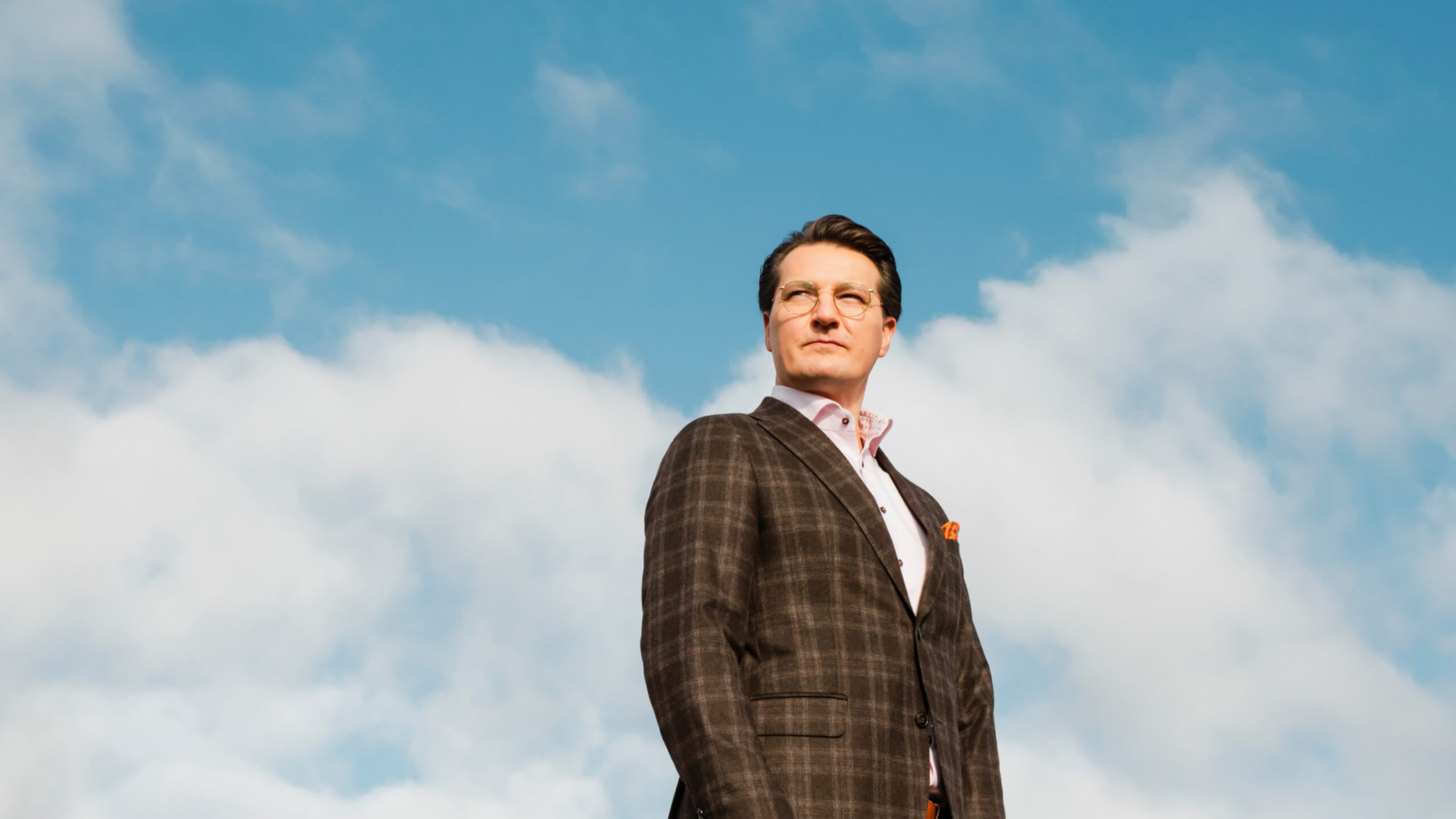
Written by:
Dr Pasi Vainikka
CEO, Co-founder, Solar Foods
Humanity’s need for food places an immense burden on the Earth’s ecosystems with the next mass extinction looming. Advances in food production technology can shift the equation radically, writes the CEO and co-founder of Solar Foods, Pasi Vainikka.
This year, the 18 gigatonnes of greenhouse gas emitted just from what we eat equal the entire amount of global fossil and industrial emissions in the year I was born. In 1977, the global population was 4.2 billion, now it is 7.8 billion; in numbers, Homo sapiens has been an evolutionary success. But it may end up eradicating itself as it is not yet smart enough to cease its adverse impact on its host—the Earth.
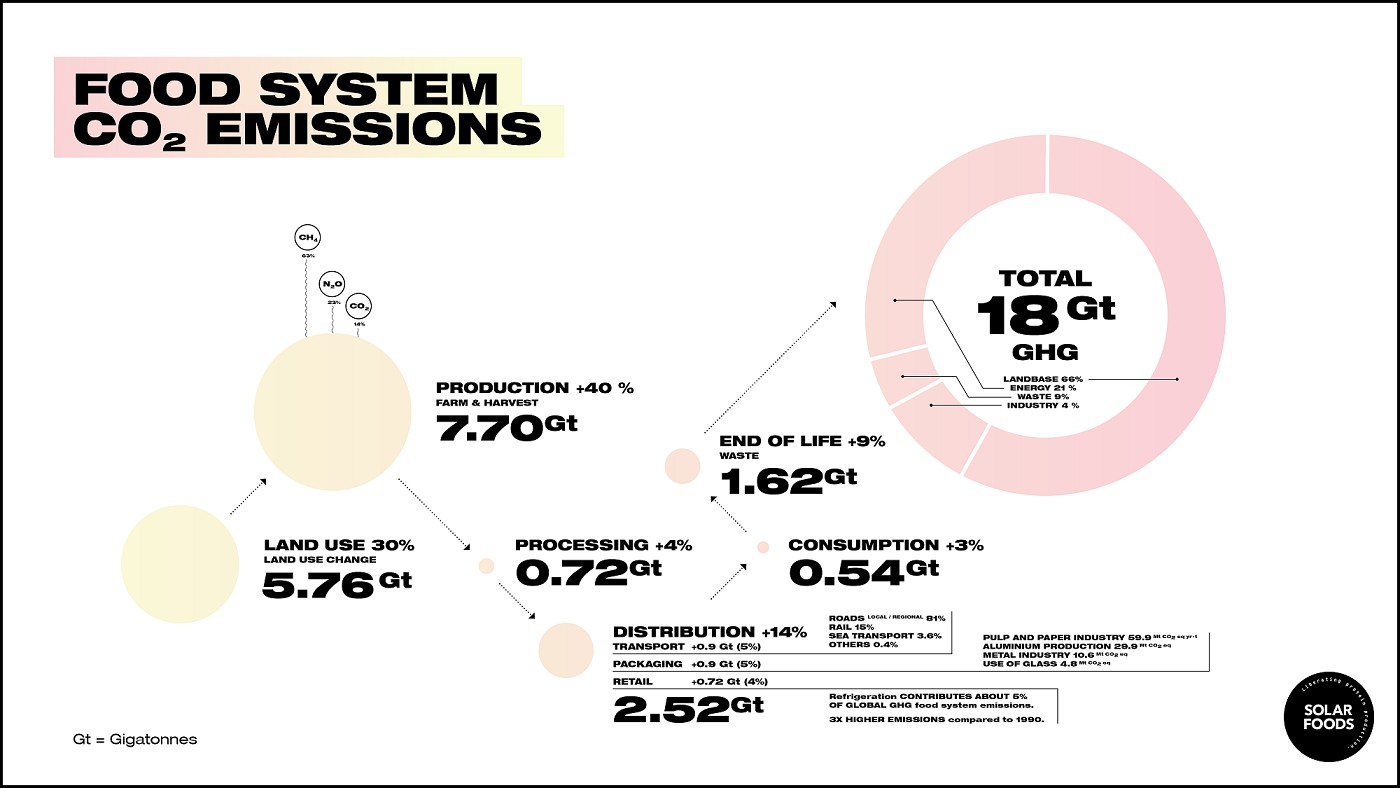
The food system consists of several phases each of which produces gigatonnes of greenhouse gas emissions. Nevertheless, the main sources are clearing land, farming and harvesting.
The conversion of forests into agricultural land is the main reason species are going extinct. Homo sapiens’ track record is impressive: it is responsible for the extinction of 869 (and counting) species over the past 500 years. Those species have made room for other species: today, Homo sapiens and its livestock form 96% of the weight of all mammals on land. The world’s most abundant bird is the chicken with a population of 25 billion. The second most abundant is the house sparrow at 1.6 billion. North America has been estimated to have lost about 3 billion birds during my lifetime.
The situation has escalated to the point where Homo sapiens is not only eradicating the other species on the planet but is on the verge of eradicating itself.
We’re eating up the planet
Food production is the main cause of global environmental change: it occupies 40% of the planet’s land area, makes up 70% of the freshwater use and causes 30% of global greenhouse gases.
One third of food-related emissions are due to forest loss. The Earth has lost about 450 million hectares of tree cover since the year 2000, causing 170 gigatonnes of CO2 emissions. That is equal to the combined global fossil fuel emissions of the past five years. In the past 100 years, we have lost as much forest as in the previous 9,000—an area about the size of the United States. With a relatively small population of about 1.5 billion, Homo sapiens started wiping out forests very efficiently, for both materials and food. We would expect the Homo sapiens of today to be smarter.
Homo sapiens has hacked down forests, but hasn’t it created anything in its place? Yes, a lot of stuff. In 2020, the global mass of human-made things—all of our stuff—exceeded all living biomass on Earth.
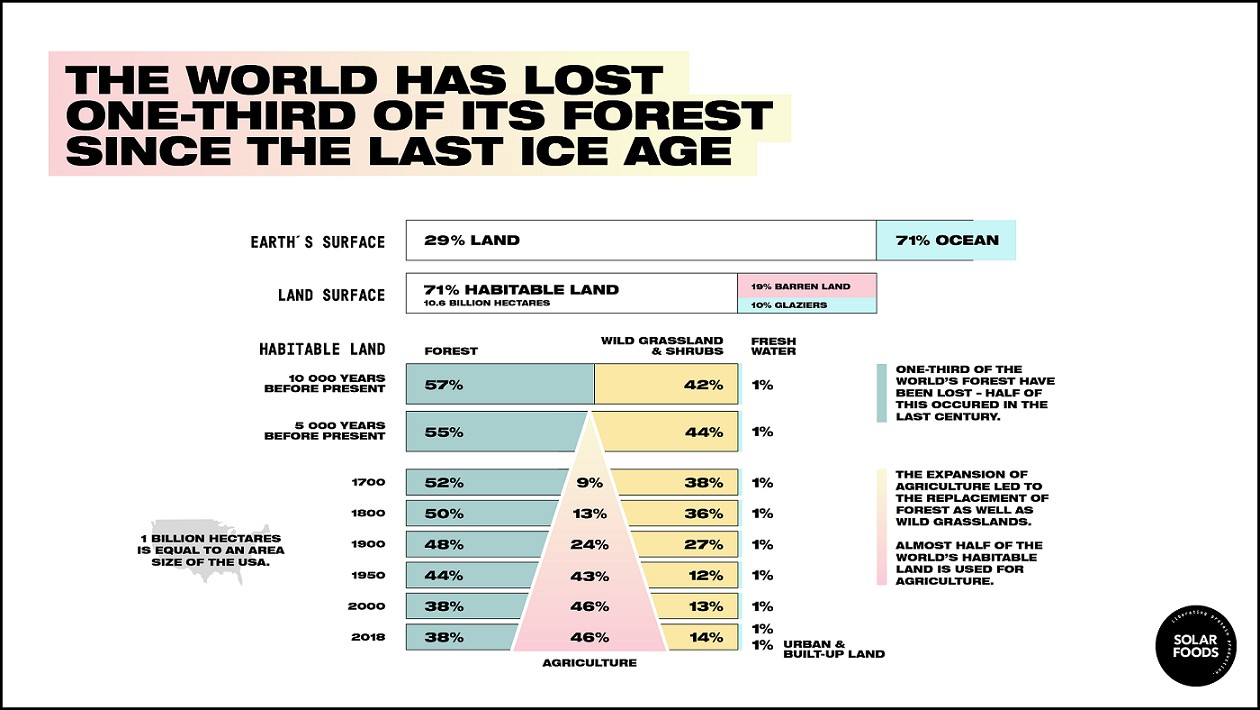
Deforestation has accelerated exponentially throughout human history, which is making it making it harder by the day to avoid a climate catastrophe and mass extinction.
A cautious estimate is that the 2,000 million hectares of forest humans have cut down in total have caused 1,000 gigatonnes of CO2-equivalent emissions. If we could conjure all those lost forests into existence, Homo sapiens could reverse its historical climate impact to 1981 levels. Forests give Homo sapiens a chance. Letting forests recover, afforestation and reforestation, are the keys to Homo sapiens’ survival.
What can we do to survive?
Firstly, scientists, policymakers and the private sector need to work together to roll out technologies that enable a carbon-negative trajectory for the climate. In other words, removing human-made CO2 from the atmosphere. Negative emissions are required after the year 2050 if global warming is going to be limited to less than 3 degrees.
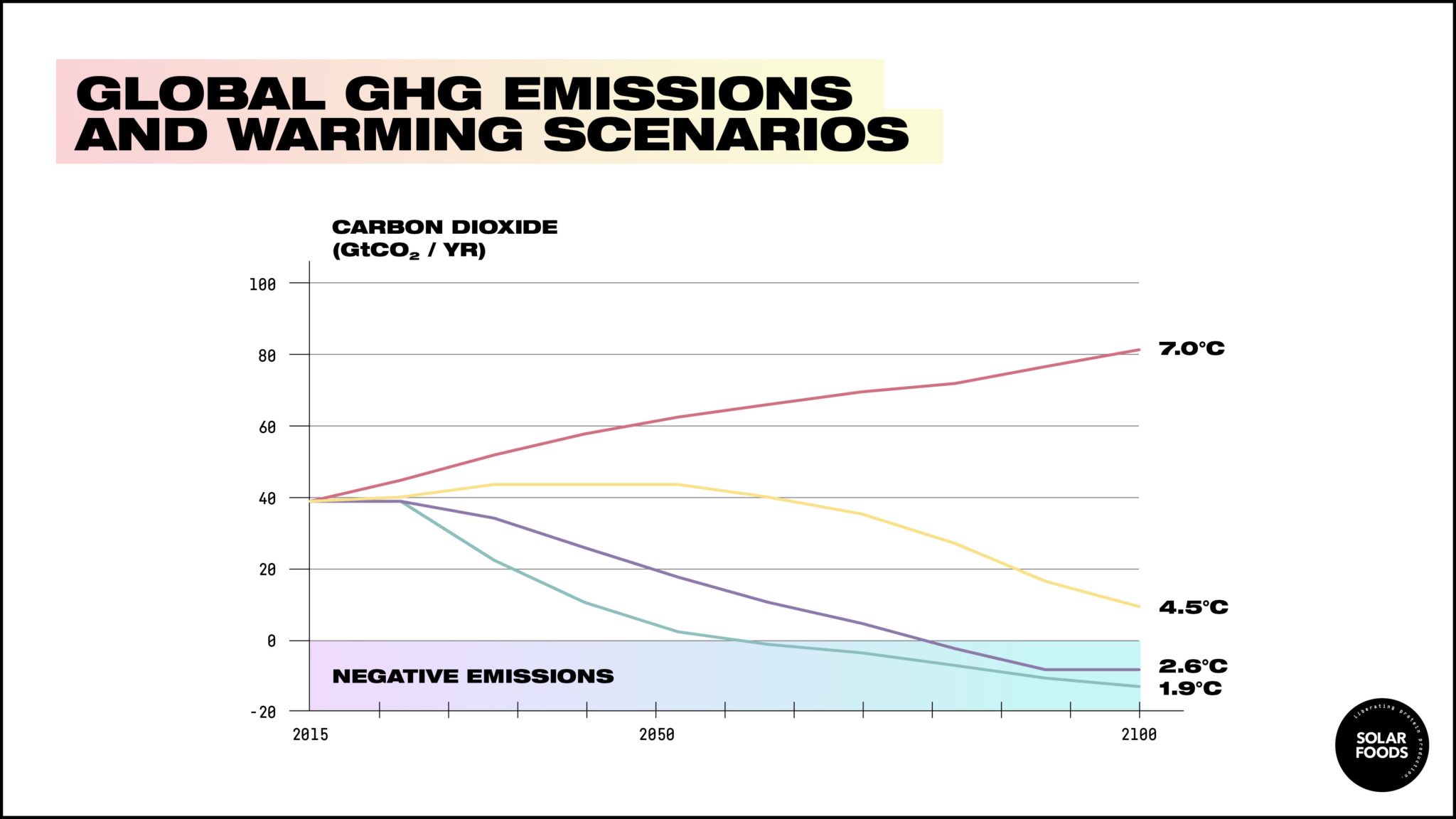
Without fast, aggressive limits on CO2 emissions, the Earth will likely warm by an average of 4.5°C by the century’s end. To compare, the Earth was 4.5°C colder during the last Ice Age. If we reverted to using fossil fuels like 40 years ago, we could even reach average temperatures of 7.0°C or more by 2100, which would make even Siberia inhospitable.
Solar Foods’ fundamental innovation is the disconnection of food production from the key problem: land use. We can capture CO2 and use it together with renewable electricity to grow a single-cell protein, Solein. It is not a carbon-negative technology, as it merely circulates the CO2 already in the atmosphere like annual crops, but the systemic effect can be.
Solein production needs 1% of the land needed for beef production: if it replaced beef, the freed pastures could be reforested, binding vast amounts of carbon dioxide. Additionally, no fertilisers or pesticides are applied on open land to produce Solein. Rewilded forests would restore natural ecosystems providing natural habitats for wildlife.
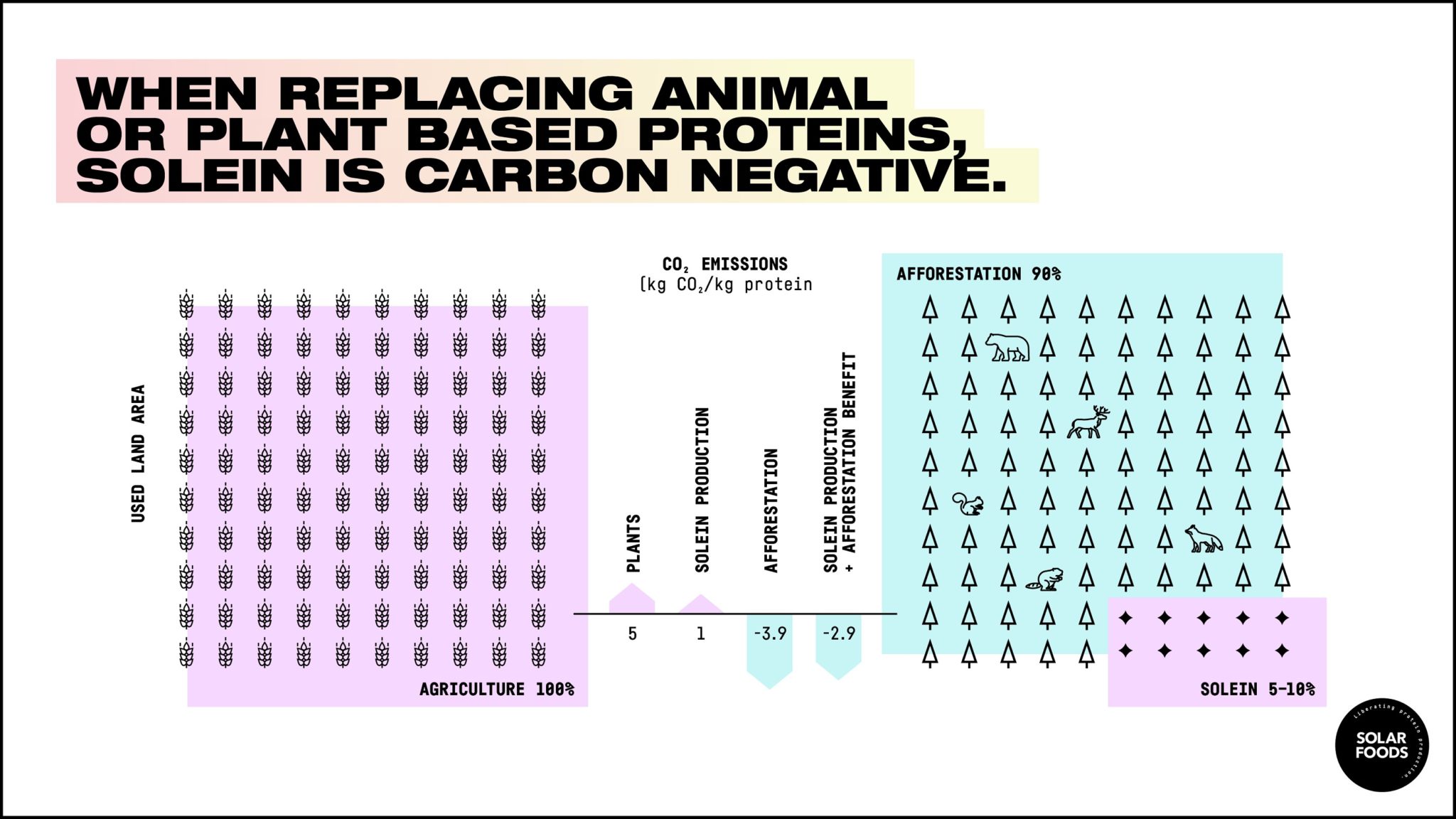
If conventional protein agriculture was replaced by Solein and the land used by them afforested, Solein production would be taking out more carbon from the atmosphere than it uses – making it carbon negative.
Anything is possible
I am hopefully at the halfway point of my life; in a few years, I will have witnessed the doubling of our species and an enormous rise in living standards across the world. But the prevailing scenario is that Homo sapiens is heading towards a series of tragic events, though what form they will take I am of course not sure.
What has made the trajectory of our species different from all the others, is human ingenuity. We can choose. And if the choices aren’t to our liking, we can come up with new ones. Homo sapiens has the capacity to end its parasitic behaviour of depleting its host’s resources and live in symbiosis with the planetary ecosystem. Every other species has done so. But we don’t need millions of years of trial and error to find out how.
We have a couple of decades for a complete turnaround.
This is an abridged version of Pasi Vainikka’s essay originally published on OECD’s Forum Network with the title “COP26 has a virus to deal with. The virus is called Homo sapiens.”

